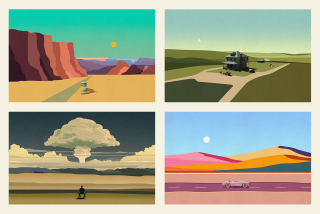PHOTOGRAPHER’S GALLERY / PAKISTAN : How Green Is Their Valley
- Share via
Free-lance photographer Mary Altier was enticed to visit Pakistan’s Hunza Valley by the oft-repeated story that the valley was the inspiration for Shangri-La in James Hilton’s 1933 novel “Lost Horizon.”
The myth may well be just that: a false rumor. But Altier did find an isolated land of exquisite beauty, carved from harsh surroundings, often under brutal conditions. She visited two years ago during a monthlong trip through Pakistan. Altier and her two women traveling companions hired a guide and driver to accompany them through a region where it is not advisable for women to travel alone.
The Hunza Valley is in northernmost Pakistan, along an ancient silk-trading route that connects the Indus Valley with western China. At about 9,000 feet, it sits on the western fringe of the Himalaya Mountains, in the Karakoram Range.
Altier, who makes her home near Santa Cruz, and her friends reached the Hunza by Jeep from the Pakistani capital of Islamabad. Once they reached the valley, they made their base in the town of Karimabad and took day trips from there. She found the Hunzakuts, as the people are known, to be friendly and hospitable.
The valley is dominated by members of a unique and liberal Ismaili Muslim sect who follow the Aga Khan. The sect allows women to appear in public without veils. Still, Altier might not have been able to photograph the women had it not been for introductions from her guide and driver, who were native to the area.
Altier visited in late July, when the Hunzakuts were already harvesting their crops. At this elevation, the growing season is short; an elaborate irrigation system accounts for the lush green valley floor.
Altier’s photographs and accompanying comments document life as she found it in the Hunza.
More to Read
Sign up for The Wild
We’ll help you find the best places to hike, bike and run, as well as the perfect silent spots for meditation and yoga.
You may occasionally receive promotional content from the Los Angeles Times.






